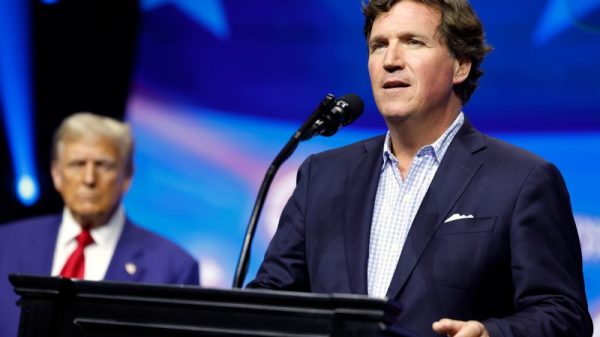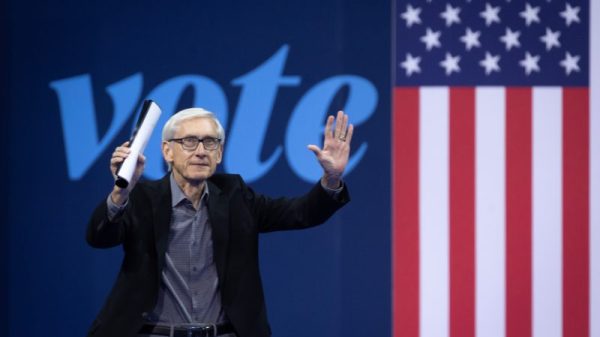In their Third Quarter 2024 Results Conference Call, Trinity Industries (NYSE:TRN) revealed a robust financial performance, with CEO Jean Savage announcing significant year-over-year growth. The company raised its full-year earnings per share (EPS) guidance following a 22% increase in operating profit and a substantial rise in adjusted EPS. Key drivers for this growth were identified as favorable pricing, increased lease rates, and a healthy demand in the agriculture and chemical markets, leading to an expected delivery of around 40,000 railcars in 2024.
Key Takeaways
Adjusted EPS rose to $0.43, up $0.17 from the previous year.
Full-year EPS guidance increased to $1.70 – $1.80, from $1.30 – $1.50.
Railcar Leasing and Services segment reported an 11% revenue increase and a 20% rise in operating profit.
Rail Products segment generated $603 million in revenue with a backlog of $2.4 billion.
CFO Eric Marchetto noted a 12-month adjusted return on equity (ROE) of 18.3%.
The company plans to reduce net fleet investment by $100 million, with expected gains of approximately $55 million from lease portfolio sales.
Full-year margin guidance is close to 8%, with the fourth quarter expected to exceed 7-9%.
Management remains confident in achieving 120,000 industry deliveries over three years.
Company Outlook
Trinity Industries is optimistic about concluding 2024 positively, with an outlook for continued improvement in lease rates.
The next earnings report in February will cover full-year 2024 results and provide 2025 guidance.
Bearish Highlights
The company has observed a recent decline in book-to-bill orders.
Challenges have been faced in acquiring secondary market railcars, leading to a reduction in fleet investment.
Bullish Highlights
The secondary market for railcars remains strong, with increasing lease rates.
Approximately 48% of the fleet has been repriced in the last 10 quarters.
Lease rates have risen 26.9% from the second to the third quarter.
Misses
There are no specific misses mentioned in the provided earnings call summary.
Q&A Highlights
During the Q&A, management addressed the margin guidance and the company’s active role in the rail market.
The robust demand from operating lessors and equity investors in the secondary market was discussed.
The alignment of scrapping and building rates contributing to a balanced supply of railcars was highlighted.
Trinity Industries’ strong performance in the third quarter, with an optimistic outlook for the remainder of 2024, indicates a positive trend in the railcar industry. The company’s strategic adjustments to its investment and operational efficiencies have contributed to its financial growth and raised guidance. Stakeholders can anticipate further details in the upcoming earnings report scheduled for February, which will provide a comprehensive view of the full-year results and a forecast for 2025.
InvestingPro Insights
Trinity Industries’ (NYSE:TRN) robust third-quarter performance is further supported by key financial metrics and insights from InvestingPro. The company’s market capitalization stands at $2.9 billion, reflecting its significant presence in the railcar industry.
One of the most striking InvestingPro Tips is that Trinity has raised its dividend for 14 consecutive years, demonstrating a strong commitment to shareholder returns. This aligns well with the company’s positive financial outlook and increased EPS guidance for the full year. Additionally, Trinity has maintained dividend payments for an impressive 54 consecutive years, underscoring its long-term financial stability.
The company’s P/E ratio of 17.86 suggests a reasonable valuation, especially considering the InvestingPro Tip that Trinity is trading at a low P/E ratio relative to its near-term earnings growth. This could indicate potential upside for investors, particularly in light of the company’s raised guidance and positive industry outlook.
Trinity’s revenue growth of 33.37% over the last twelve months as of Q2 2024 corroborates the strong performance mentioned in the earnings call. The company’s EBITDA growth of 41.8% during the same period further supports the narrative of significant year-over-year growth highlighted by CEO Jean Savage.
For investors seeking more comprehensive analysis, InvestingPro offers additional tips and metrics that could provide deeper insights into Trinity Industries’ financial health and market position. Currently, there are 10 additional InvestingPro Tips available for Trinity Industries, which could offer valuable perspective for those considering an investment in the company.
Full transcript – Trinity Industries (TRN) Q3 2024:
Operator: Good day and welcome to the Trinity Industries Third Quarter Ended September 30, 2024 Results Conference Call. All participants will be in listen-only mode. [Operator Instructions]. Please note this event is being recorded. Before we get started, let me remind you that today’s conference call contains forward-looking statements as defined by the Private Securities Litigation Reform Act of 1995 and includes statements as to estimates, expectations, intentions, and predictions of future financial performance. The statements that are not historical facts are forward-looking. Participants are directed to Trinity’s Form 10-K and other SEC filings for a description of certain of the business issues and risks. A change in any of which could cause actual results or outcomes to differ materially from those expressed in the forward-looking statements. I would now like to turn the conference over to Leigh Anne Mann, Vice President and Vestal Relations. Please go ahead.
Leigh Anne Mann: Thank you, operator. Good morning, everyone. We appreciate you joining us for the company’s third quarter 2024 Financial Results Conference Call. Our prepared remarks will include comments from Jean Savage, Trinity’s Chief Executive Officer and President and Eric Marchetto, the Company’s Chief Financial Officer. We will hold a Q&A session following the prepared remarks from our leader. During the call today, we will reference certain non-GAAP financial metrics. The reconciliations of the non-GAAP metrics to comparable GAAP measures are provided in the appendix of the quarterly investor slides, which are accessible on our investor relations website at www.trin.net. These slides are under the events and presentations portion of the website, along with the third quarter earnings conference call event link. A replay of today’s call will be available after 10.30 a.m. Eastern Time, third midnight on November 7th, 2024. Replay information is available under the events and presentations page on our investor relations website. It is now my pleasure to turn the call over to Jean.
Jean Savage: Thank you, Leigh Ann, and good morning, everyone. Trinity’s third quarter results once again demonstrate strong performance across our business. Our quarterly adjusted EPS of $0.43 represents a $0.17 increase year-over-year, and operating profit has risen by 22% compared to the previous year. These impressive results are driven by steady progress and consistent performance throughout 2024, which we expect to continue in the fourth quarter. Consequently, we are raising and tightening our full year EPS guidance to a range of $1.70 to $1.80. Eric will provide more details on fourth quarter expectations in his prepared remarks. Before talking about Trinity’s segment results, I’d like to provide an overview of the current market conditions. With just two months remaining in the year, we are confident in our forecast of roughly 40,000 industry deliveries in 2024. Carloads increased in the third quarter as compared to the third quarter of the previous year, primarily driven by the agriculture and chemical end markets. We expect a large corn and soybean crop harvest, which is also contributing to this carload growth. Weight expansion and improvements in railroad service have been key themes in 2024. Rail service continues to trend positively, and as the railroad sustain this type of performance, it should encourage shippers to incorporate more rail shipments in their supply chain management. And now let’s pivot to the performance of our business in the third quarter. Trinity’s business consists of two main segments, the Railcar Leasing and Services Group and the Rail Products Group. I’ll start my comments in the Leasing and Services segment, which includes our leasing, maintenance, and logistics services businesses. I’d like to note that we are particularly pleased with the benefits of aligning our leasing and maintenance businesses into the same segment. This move has resulted in better performance with lower costs. For the segment, revenues increased by approximately 11% compared to the previous year, driven by favorable pricing and a higher volume of external repairs, as well as improved lease rates and net additions to the lease fleet. Additionally, segment operating profit is 20% higher than a year ago. Segment operating margin, including gains, was 39.8% in the quarter, which aligns with our forecasted guidance. Fleet utilization remains favorable at 96.6% for the quarter. We have observed an improvement in utilization so far in the fourth quarter and anticipate concluding the year with a higher utilization rate. We completed $67 million of lease portfolio sales in the quarter, resulting in gains of $11 million. Our quarterly net fleet investment was $41 million and year to date, we have invested $87 million in our lease fleet. The future lease rate differential, or FLRD, was 28.4% for the quarter, marking 10 consecutive quarters of double-digit positive FLRD. During these 10 quarters, we have repriced 38% of our fleet. And the impact of the repricing is becoming more evident in our top line results. We expect this trend to continue as we are consistently repricing our fleet upward to market rates and the North American fleet remains in balance supporting these rates. The renewal success rate was 78% for the quarter, highlighting that railcar demand remains high and in-market economics are supportive of higher lease rates. As we continue to expand our service offerings, we are encouraged by the progress we’re making. Our efforts are gaining traction with our customers as they recognize the value our services bring to their operational efficiency. Moving to the rail product segment, our third quarter operating margin of 8.1% reflects year-over-year improvement in labor and operational efficiencies and favorable railcar mix. Revenues in the segment were $603 million. This quarter, we observed a slight shift toward tank car deliveries. Though production still continues to be significantly led by freight cars. Additionally, as we expected, we shifted more of our production into our fleet as compared to the second quarter. We anticipate these trends to continue in the fourth quarter. We expect to finish the year with an operating margin in the high end of the forecasted range of 6% to 8% in the rail product segment. During the quarter, we successfully delivered 4,360 new railcars and received 1,810 new railcar orders. Ending the quarter with a backlog of $2.4 billion. In the third quarter, we saw several customers deferring their order decisions to the fourth quarter. As a result, we are experiencing strong order activity in the fourth quarter-to-date. Additionally, customers are expanding their existing orders with take-on [ph] orders. In conclusion, I’m pleased with our business performance this quarter and throughout 2024. Our leasing business continues to operate consistently and favorably, bolstered by a more efficient production operation, a robust maintenance network, and a growing parts and services business that supports our fleet of 144,000 owned and managed railcars. I will now turn to Eric to discuss the financial statements and provide an update to our outlook for the remainder of the year.
Eric Marchetto: Thank you, Jean, and good morning, everyone. In the third quarter, our last 12-month adjusted ROE was 18.3%, above our target range introduced at our Investor Day in June. This reflects consistent operations driving strong net income balanced with a disciplined approach to managing our balance sheet. I will begin my quarterly comments with the income statement. In the quarter, we earned revenues of $799 million. External deliveries were slightly lower, both sequentially and year-over-year, but this was partially offset by favorable pricing and mix of maintenance work, improved lease rates, fleet growth, and a favorable mix of railcar deliveries. Quarterly GAAP EPS was 44% and adjusted EPS was $0.43. We maintain a positive outlook on our balance sheet position. Our loan to value ratio stands at 68.2% within our target range of 60% to 70%. Additionally, we benefit from a favorable average cost of debt with our next debt maturity scheduled for late 2025. This strategic positioning allows us to increase the spread of our cost of capital as we continue to reprice our leased assets. Moving to the cash flow statement, year to date cash flow from continued operations was $384 million, and we currently have liquidity of $924 million. Trinity’s ability to generate significant cash flow is evident in our 2024 cash performance. Year-to-date, we’ve returned $77 million through dividends paid and share repurchases, reflecting our commitment to returning capital to shareholders. We continue to believe that our best use of cash is the investment in and optimization of our lease fleet. Year-to-date, we have added $340 million of new railcar builds, secondary market additions and modifications to our lease fleet. Conversely, we have taken advantage of a strong secondary market to optimize our fleet and have sold $254 million out of our fleet to improve its composition. This includes a $143 million sale in the second quarter to an RIV partner, and those railcars remain under our management. We remain active as a buyer and seller in the secondary market, and we believe we have capitalized on favorable market conditions to optimize our business returns. I will conclude my remarks for their expectations for the last quarter of the year. As Jean mentioned, we expect industry deliveries of approximately 3,000 railcars in 2024. Even my prior comments on net fleet investment, we are lowering our net fleet investment guidance by $100 million for the range — for the year to a range of $200 million to $300 million. The secondary market has proven more attractive than initially expected, and we realize strong returns from the secondary market sales. Consequently, we expect to end the year with approximately $55 million in gains on lease portfolio sales, up from our prior full year expectation of about $40 million. Some of these secondary market sales come from our partially owned fleet, which will result in elimination of gains due to minority interests. We anticipate the impact to minority interests to be about $4 million over the third quarter run rate. We continue to expect about 20% to 25% of our new railcar deliveries to go into our lease fleet for the full year, which implies higher eliminations in the fourth quarter. Our outlook for operating and administrative capital expenditures remains unchanged at $50 to $60 million. Finally, with nine months of results now in, we are raising and tightening our EPS guidance. We anticipate ending the year with EPS from continuing operations of $1.70 to $1.80. In February, we introduced our 2024 initial guidance of $1.30 to $1.50. We exceeded our starting expectations with the current midpoint of guidance being $0.35 higher than initially projected. This improvement is attributed to our rail products group operating margins, which has ramped well this year due to enhanced operational and labor efficiencies, a more favorable mix of maintenance work, higher than expected gains on railcar sales, and a consistently performing core leasing business. In summary, we are pleased to have driven favorable outcomes across our lines of business and expect to conclude 2024 on a positive note. We look forward to updating you during our year-end call in February and providing guidance for 2025 at that time. Operator, we are now ready to take our first question.
Operator: We will now begin the question and answer session. [Operator Instructions]. The first question comes from Bascome Majors with Susquehanna. Please go ahead.
Bascome Majors: Thanks and good morning. On the OEM margin guidance that you gave, you talked about, I believe, ending the year at the high end of your range. Was that specific to the fourth quarter or was that suggesting your full year margin would be at close to 8%, which would imply maybe above 8% in the fourth quarter?
Jean Savage: We’re talking about tying to the range for the year. So it’ll be in that 60% and closer to the eight.
Bascome Majors: Okay. And that would put you in the fourth quarter above where you’ve sort of suggested the margin range for next year could fall out in that 7% to 9% from your Investor Day. Can we walk through how you’ve maybe lifted the margin faster than you thought you could earlier this year and shared at your Investor Day? And maybe what risks, be it mix, production rates, other things that we can’t see on the call side that suggest that could pull back a little bit before it continues to move forward to the range you set for 2026?
Jean Savage: Sure. So when you look at it, first the team has done a great job getting the labor efficiency and operating efficiency up. Some of the things they’ve done is worked on fixtures to help us with families of cars that go through a plant and lessen the set up time that has to occur during that. Other things is just we’re getting, the workforce is getting much more experience, so over a year. And so before we had a lot of younger employees which tends to lead to lower efficiencies. So all of that plays into within the mix of cars and how many setups that you’re going to do within a month or within a quarter will also affect those. So you will vary, vary won’t be a linear number that you’re going to see depending on the mix, depending on the number of setups we’re doing in that term or in that timeframe.
Bascome Majors: And last question on the manufacturing side, but you did have another quarter below book-to-bill orders, but you also said that there was some slippage into 4Q and the order quarter, sorry, the orders this quarter are going to be much stronger. I mean, do you think — will they be strong enough to support a stable to growing backlog from where you sit today one month in the quarter? And what’s the management strategy around managing the production schedule if orders remain at a rate that doesn’t necessarily support the current production rate for you guys in the industry? Thank you.
Jean Savage: Thanks, Bascome. So we still firmly believe in our 120,000 industry deliveries over the three year time period that we introduced at the Investor Day. And when you look at that, we talked about having higher floors. And as we look at 253,000 cars left in the network that are over 40 years old, we’re still looking at replacement demand driving the demand for the new railcars. The other thing I’m going to point out there is scrappage rates. So far through the third quarter, about 28,000 cars have been scrapped. We’re expecting just under 40,000 for the full year, which is very much in line with the new car production that we talked about for this year at 40,000. And I guess the last thing I’m going to say there is railcars and storage has dropped and it’s the normal seasonal rate. It’s down to 19% right now in storage. So all those combining together still say that we have a tight market. It’s supply driven demand that we’re seeing and we expect that to continue.
Bascome Majors: And to that point, the market structure and supply demand dynamics that you’re discussing make a ton of sense. I’m curious, how do we reconcile that with your customers just being a bit skittish to place a more significant amount of orders that support that replacement rate in recent quarters? I mean, when you talk to your customers, is there a common thread or a theme as to why there’s been a bit of a pause in the last few quarters? And do you see anything in their psychology or access to capital or view of the rail market or the economy that could unlock this in the next two to three quarters?
Jean Savage: Sure. And I’m going to start by saying that you’re probably hearing a lot of companies talk about this. The election has caused many people to delay making some of the decisions in regards to capital. But we’re having lots of really good conversations with customers about what their needs are. We’re seeing inquiry levels come in, but they are delaying those decisions somewhat to see what happens during the election. The other thing I’m going to say, Bascome, is we’ve got 45% of the industry backlog sitting on our books right now. And the fact that the supply chain has improved allows us to go back to more normal big times for railcars and placing orders. You know, during COVID, it extended out, and you had about a year to get a car once you ordered it. We hit that down in that three to six months now, so you’re going to see those dynamics change a little bit
Eric Marchetto: And Bascome, I would just add. This is Eric. What we are seeing our customers do, especially the industrial shippers, is they’re holding onto their railcars. As Jean mentioned in the prepared remarks, we had a 78% renewal success rate. So that gives you some idea that customers are confident. They’re going to need these railcars, and they’re preparing for growth while they’re not ordering new railcars at the pace that we’re delivering railcars. I think that does send a signal in terms of confidence and outlook going forward.
Bascome Majors: And to that point, you came into the year on the leasing side, but maybe a more conservative view on how the secondary market would play out. And clearly it’s been persistently robust. I mean, you just raised the P&L gains guidance and the cash in from railcar sales guidance. How do you feel about that continuing to have some durability here? I mean, are you seeing any change in the makeup or depth or interest of clients that look either from your core RIV partners, or maybe more of a traditional putting books out and taking a number of other bids? Just any picture of how the secondary market looks today and your conviction and how long that can continue would be helpful? Thank you.
Eric Marchetto: Yes, sure. This is Eric again. I think part of that’s just the beauty of our platform. We play in the rail market in all aspects, whether it’s building new railcars, leasing existing railcars, and certainly in the secondary market, we’ve been very active. To your point, the breadth and depth of the market have been quite good. We’re seeing railcars remain an attractive investment for both operating lessors and for passive equity investors. And so we’re seeing strong appetite. We’re seeing that the market still expects lease rates to continue to improve based on their assumptions and their underwriting assumptions when they’re bidding on deals. So yes, we’ve been very satisfied with the secondary market. But getting to our fleet investment, that’s one of the drivers why we lowered our fleet investment. We haven’t been as successful in buying secondary market railcars. We’ve been more successful in selling them. That just speaks to the pricing dynamics.
Bascome Majors: Last one, your FLRD measure remained pretty steady. That’s consistent with some of the adjacent remetrics reported by your peers. I can’t recall if you said this in prepared remarks, but I think you’re about halfway through repricing your lease books since lease rates really took off two and a half, three years ago. Do you see anything on the horizon that changes that dynamic now? I mean, it seems like the drop in steel prices hasn’t really had an impact. The drop in interest rates doesn’t seem to be having an impact, although that’s reversing a little bit here more recently. Any thoughts on the pricing power and supply dynamics that are really fueling your ability to drive greater returns from that lease fleet existing assets? And is this another two and a half, three years to get to the rest of the book, that will be a rising time for Trinity and your peers? Thank you.
Jean Savage: So you were right. We repriced about 48% of our fleet in the last 10 quarters since the FLRD turned double digit positive. And so, when we look at that, we’re still seeing sequential improvement in those lease rates. If you look at third quarter versus second quarter, we went up 26.9% on the rates. So it’s still very strong dynamics. Why is that? It’s a really balanced fleet, right? It’s supply driven. We have the number of cars getting scrapped are really in line with the number of cars being built. So it’s keeping those dynamics in the market tight, which allows us to continue to have room to work and raise those lease rates. So we’re really happy for the position we’re at with the lease fleet and the rates and where we can see that going.
Bascome Majors: Jean, Eric, Leigh Anne, thank you very much.
Eric Marchetto: Thank you.
Jean Savage: Thank you, Bascome.
Operator: This concludes our question and answer session. I would like to turn the conference back over to Jean Savage, Chief Executive Officer and President for any closing remarks.
Jean Savage: Thank you. And I’d like to extend my gratitude to the Trinity team for their hard work and driving these outstanding results for our business. I am encouraged by our performance and I look forward to speaking with you again in February where we’ll refer on our full year 2024 results and outline our plans and guidance for 2025. Thank you all for your continued support of Trinity.
Operator: The conference has now concluded. Thank you for attending today’s presentation. You may now disconnect. Thank you.
This article was generated with the support of AI and reviewed by an editor. For more information see our T&C.

































